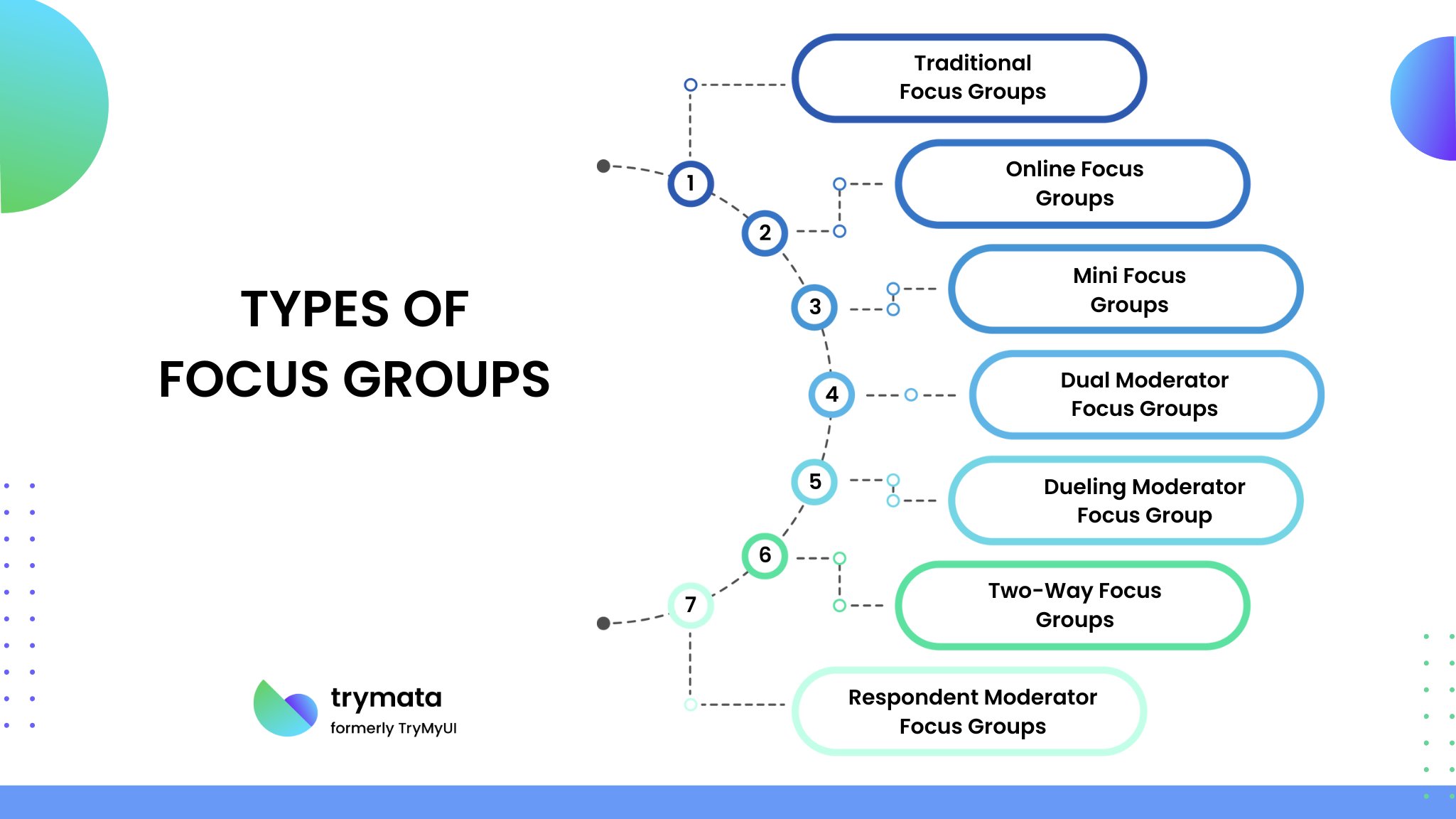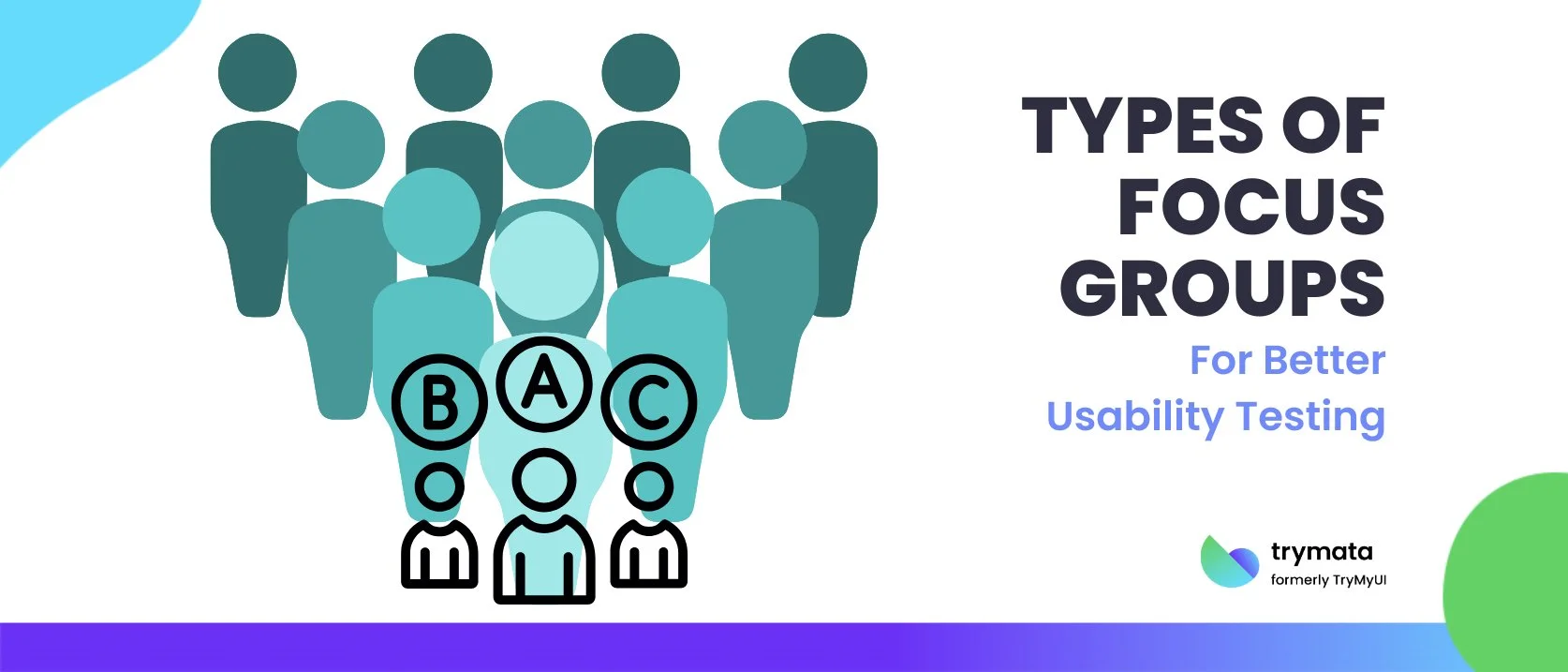Focus group research is one of the most effective qualitative methods for gathering in-depth feedback. Whether you’re in market research, UX, healthcare, or applied research, focus groups can uncover key themes, group dynamics, and valuable insights that individual interviews might miss.
However, not all focus groups are created equal. There are many types of focus groups, and each serves a specific purpose depending on your research goals, target audience, and discussion topic.
In this blog, we’ll break down what a focus group is and why it matters, and explore different types of focus groups you can use to conduct research effectively.
What is a Focus Group?
A focus group is a qualitative research method to gather participant feedback, opinions, and insights around a particular topic. This group-based approach helps researchers understand how people think, feel, and behave in specific contexts, especially regarding usability, product design, marketing, or healthcare.
Unlike individual interviews, focus groups rely on group interaction to spark discussion. This interaction often surfaces opinions and perspectives that might not emerge in a one-on-one setting. A typical focus group session includes a moderator, a small group of participants, a discussion guide, and either live observers or recorded sessions for analysis.
When you aim to gather qualitative data for usability testing or customer experience research, focus group discussions can help you gain valuable insights into what users need, what confuses them, and how they experience a product or service.
Types of Focus Groups
Not all focus groups are created equal. Depending on the topic, the audience, or the complexity of the subject, researchers often tailor the focus group format to fit the research objectives. For instance, testing sensitive or personal topics might require a different approach than evaluating a website’s user experience.
This is where knowing the types of focus groups becomes useful. You can conduct multiple focus groups across formats to compare responses, or select the best style to encourage participation, especially when trying to gain valuable insights from harder-to-reach users.
Now that we’ve covered the basics, let’s look at the most common types of focus groups used in applied research, especially for usability testing and market research.

1. Traditional Focus Groups
These are your classic, in-person groups. Usually held in a controlled environment like a lab or conference room, traditional focus groups bring together 6 to 10 focus group participants with a trained moderator.
Great for: observing body language, reading room tone, and managing group dynamics
Challenges: logistics, travel, cost
When you want to gather in-depth expert feedback on a prototype or explore a product concept in a group setting, traditional sessions still offer a lot of value.
2. Online Focus Groups
Online focus groups take the traditional format into a digital space. Tools like Zoom, Teams, or dedicated remote focus group platforms make gathering people from different locations easy.
Great for: reaching a broad range of users, testing remotely, accessing hard-to-reach populations
Challenges: limited ability to read body language, tech issues
This format offers flexibility and speed if you’re conducting focus group research during early design phases or evaluating digital tools.
3. Mini Focus Groups
A mini focus group involves fewer people, usually 3 to 5 group members. This allows for more in-depth exploration and encourages quieter participants to share more.
Great for: niche topics, sensitive issues, or early exploration
Challenges: fewer perspectives
These are especially helpful when conducting focus groups with technical users or gaining valuable insights from specialists.
4. Dual Moderator Focus Groups
In this format, two moderators are present. One handles the flow of the focus group discussion, while the other ensures all topics from the discussion guide are covered.
Great for: staying on track and making sure no details are missed
Challenges: potential confusion if not well coordinated
Dual moderator focus groups are ideal when testing complex systems that need structure and clarity.
5. Dueling Moderator Focus Group
Here, the two moderators deliberately take opposing views to spark group interaction.
Great for: revealing strong opinions, testing assumptions, encouraging group dynamics
Challenges: may intimidate some focus group participants
A dueling moderator focus group can bring unexpected insights and works best with experienced moderators.
6. Two-Way Focus Groups
This setup uses two focus groups: one group conducts the discussion while another observes. The observing members may later discuss what they saw.
Great for: understanding how different groups react to the same stimulus
Challenges: requires more planning and time
Two-way focus groups are particularly useful in usability testing when the research team wants to understand user responses and how others interpret those responses.
7. Respondent Moderator Focus Groups
In this model, one of the focus group participants steps into a moderator role for part of the session. This often leads to surprising revelations and new group dynamics.
Great for: identifying natural leaders, empowering users
Challenges: potential lack of direction
Respondent moderator focus groups are excellent for co-creation sessions or user-led design.
Focus Groups vs. Individual Interviews
Both have their place in usability testing. Here’s a quick comparison:
| Element | Focus Groups | Individual Interviews |
| Group Size | 5–10 | 1 |
| Setting | Group interaction | One-on-one |
| Ideal For | Exploring shared experiences, sparking conversation | Deep individual insights |
| Limitations | Risk of groupthink | Can lack diverse viewpoints |
| Analysis | Thematic, across group members | Personalized, user-specific |
Many research projects benefit from a mix of both. For example, you might conduct research using one focus group to explore themes, then run interviews to validate and deepen the findings.
Benefits of Focus Groups in Usability Testing
When compared with other research methods, focus groups offer:
- Deeper understanding of user needs and context
- More dynamic feedback than surveys
- The chance to observe group dynamics
- Insights into how people influence each other
- A format that feels more collaborative and open
They’re a valuable tool for applied research across industries, whether you’re building a healthcare app for the Canadian Family Physician audience, testing a B2B dashboard, or evaluating a new eCommerce experience.
Conclusion
Understanding the different types of focus groups can help researchers choose the proper structure for their needs. Whether leveraging dual moderator focus groups for in-depth analysis, running online focus groups to reach a global audience, or using mini focus groups for niche topics, each method offers unique advantages.
Focus groups are a valuable tool in any qualitative research toolkit. They let you explore complex emotions, test new concepts, and gain valuable insights beyond the surface. With thoughtful planning, the proper focus group format, and a precise research method, you can unlock a deeper understanding of your audience—and make smarter, more informed decisions.




